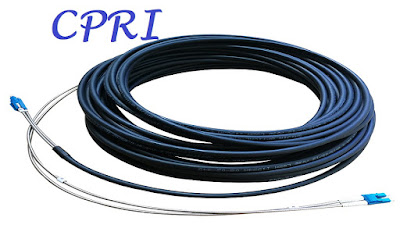CPRI (Common Public Radio Interface) is a specification for wireless communication networks that defines the key criteria for interfacing transport, connectivity and control communications between baseband units (BBUs) and remote radio units (RRUs), which are also called remote radio heads (RRHs). The specification is being developed by a consortium of original equipment manufacturers (OEMs) which includes Nokia, Huawei Technologies, Ericsson AB and NEC Corporation.
An important feature of CPRI is its support for separation between the base frequency band and the radio frequency band. CPRI focuses on the communication link, the fronthaul network that interfaces between radio transceivers and base stations.
CPRI specifications support L1 in-band protocol, High level Data Link Control (HDLC) and Ethernet for configuration and management data. Other data types supported by CPRI include synchronization for frame and time alignments. The CPRI specification is not a standard, but it complements 3GPP and 3GPP2 (3G and LTE) frameworks.
The OEMs behind CPRI are also working on an updated specification called eCPRI, which will support a 5G fronthaul over Ethernet. Features in eCPRI include minimizing bandwidth requirements with CPRI mapping and more flexibility for the fronthaul CPRI and eCPRI nodes.
Introduction to CPRI Interfaces for 5G Base Stations
Introduction to Optical Fiber Communication Technology
An important feature of CPRI is its support for separation between the base frequency band and the radio frequency band. CPRI focuses on the communication link, the fronthaul network that interfaces between radio transceivers and base stations.
Benefits of CPRI include:
- Base station manufactures can use one common protocol.
- The specifications are freely made available to the public.
- The public can contribute ideas and proposals about the CPRI specifications.
CPRI specifications support L1 in-band protocol, High level Data Link Control (HDLC) and Ethernet for configuration and management data. Other data types supported by CPRI include synchronization for frame and time alignments. The CPRI specification is not a standard, but it complements 3GPP and 3GPP2 (3G and LTE) frameworks.
The OEMs behind CPRI are also working on an updated specification called eCPRI, which will support a 5G fronthaul over Ethernet. Features in eCPRI include minimizing bandwidth requirements with CPRI mapping and more flexibility for the fronthaul CPRI and eCPRI nodes.

CPRI plays such a vital role in connecting BBUs and RRUs, especially with the transition toward 5G. For those exploring advanced IT and telecom solutions, alturab provides services that align well with modern network needs.
ReplyDeletePost a Comment